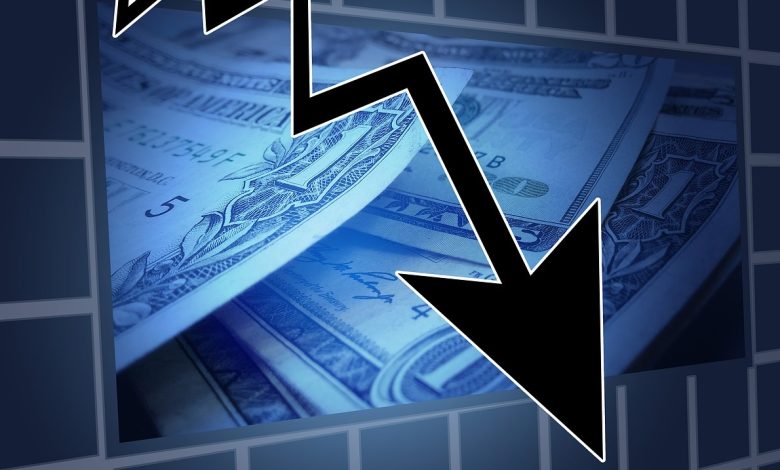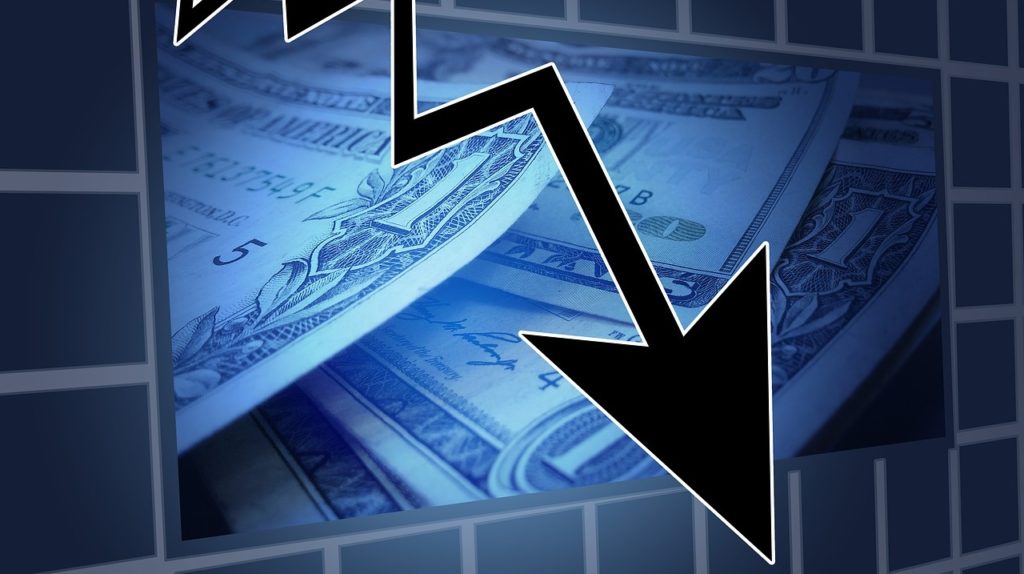Moody’s Lowers US Credit Outlook to “Negative”

Mainstream media pundits and politicians generally act unconcerned about the skyrocketing national debt and ever-growing budget deficits, but somebody has taken notice.
On Friday, Moody’s Investor Service lowered its outlook on US government credit from “stable” to “negative.” This could be a prelude to a downgrade in the country’s AAA credit rating. The agency typically resolves an outlook by either revising it back to stable or executing an actual downgrade within 18 to 24 months.
Credit ratings represent an agency’s assessment of the country’s ability to make good on its debt obligations.
Moody’s cited rising interest rates and the lack of political will to address the national debt as reasons for the outlook change.
In the context of higher interest rates, without effective fiscal policy measures to reduce government spending or increase revenues, Moody’s expects that the US’ fiscal deficits will remain very large, significantly weakening debt affordability.”
Moody’s also expressed concern about the “ongoing political polarization within US Congress,” saying it will hinder the ability to “reach consensus on a fiscal plan to slow the decline in debt affordability.”
Moody’s is the last of the three major rating agencies to maintain a top AAA rating for the US government debt.
This move by Moody’s follows a rating downgrade from AAA to AA+ by Fitch in August.
“The repeated debt-limit political standoffs and last-minute resolutions have eroded confidence in fiscal management,” Fitch said at the time, noting that the US government doesn’t have any kind of “medium-term fiscal framework,” and operates under a “complex budgeting process. In other words, Congress sets the budget on a year-by-year basis.
These factors, along with several economic shocks as well as tax cuts and new spending initiatives, have contributed to successive debt increases over the last decade.”
The Moody’s outlook downgrade occurs as the US government stands on the brink of another government shutdown. The current stopgap funding deal reached before the last deadline runs through Nov. 17.
Unsurprisingly, the Biden administration “disagrees” with the shift to a negative outlook. Deputy Treasury Secretary Wally Adeyemo claimed the US economy “remains strong” and touted the safety and liquidity of US Treasuries.
White House press secretary Karine Jean-Pierre blamed Republicans, saying the outlook change was “yet another consequence of Congressional Republican extremism and dysfunction.”
THE REAL PROBLEM #1
Political posturing aside, the real problem is the US government borrows and spends too much money, and the cost of borrowing is rising rapidly.
Adeyemo claimed that the Biden administration has demonstrated its “commitment to fiscal sustainability,” noting over $1 trillion in deficit reduction measures included in June’s debt ceiling deal. But this deficit reduction hasn’t shown up in reality. The administration consistently averaged half a trillion dollars in spending every single month of fiscal 2023.
As a result, the 2023 budget shortfall was bigger than any run during the Obama administration during the Great Recession, and yet this economy is supposedly strong. Typically, strong economies result in smaller deficits as tax revenue rises.
That was not the case in fiscal 2023. Federal Receipts fell by 9.3% to $4.44 trillion.
The federal government enjoyed a revenue windfall in fiscal 2022. According to a Tax Foundation analysis of Congressional Budget Office data, federal tax collections were up 21%. Tax collections also came in at a multi-decade high of 19.6% as a share of GDP. But CBO analysts warned it won’t last. And government tax revenue will decline even faster as the economy spins into a recession.
Treasury Secretary Janet Yellen was quick to blame falling tax receipts for the big deficit and said it underscores “the importance of President Biden’s enacted and proposed policies to reform the tax system.”
But the big problem is on the spending side of the ledger. Strong receipts in 2022 papered over the spending problem.
The US government officially blew through $6.13 trillion in fiscal 2023. That was down slightly from last year’s total expenditures, but the numbers were skewed by student loan forgiveness accounting. If you factor out a reversal of student loan forgiveness that was added to the spending column in 2022, the Biden administration spent $6.46 trillion in fiscal 2023, an 8.8% year-over-year increase in actual spending.
And the administration is already asking for more money to fund foreign aid for both Ukraine and Israel. In fact, no matter what you hear about spending cuts, the federal government is constantly finding new reasons to spend more money.
This underscores the fundamental issue. It isn’t that the US government doesn’t have enough money. The fundamental problem was, and still is, that the US government spends too much money. Despite the pretend spending cuts, the debt ceiling deal didn’t address that problem. Even with the new plan in place, spending will go up. And it’s already historically high. That means big budget deficits will continue and the national debt will mount.
THE REAL PROBLEM #2
This rapid increase in the national debt is happening during a period of sharply rising interest rates. This is a big problem for a government primarily relying on borrowing to pay its bills.
Interest expense rose by 23% to $879 billion in fiscal 2023. Net interest, excluding intragovernmental transfers to trust funds, rose by 39% to $659 billion. Both of those numbers broke records.
Gross interest payments amounted to 3.28% as a share of gross domestic product, according to a Treasury Department official quoted by Reuters. That was the highest since 2001. The net share of interest expense came in at 2.45%, the highest since 1998.
The average interest rate on the debt now stands at the highest level since 2011, coming in at 2.92% as of the end of August. But that’s still relatively low, and the debt is more than double what it was back in the good ol’ days of 2011.
Meanwhile, the average interest rate is poised to climb rapidly. A lot of the debt currently on the books was financed at very low rates before the Federal Reserve started its hiking cycle. Every month, some of that super-low-yielding paper matures and has to be replaced by bonds yielding much higher rates. That means interest payments will quickly climb much higher unless rates fall.
To give you an idea of where we’re heading, T-bills currently yield about 5.5%, the two-year yield is over 5% and the 10-year currently yields close to 5%.
Rising interest rates drove interest payments to over 35% of total tax receipts. In other words, the government is already paying more than a third of the taxes it collects on interest expense.
If interest rates remain elevated, or continue rising, interest expenses could climb rapidly into the top three federal expenses. (You can read a more in-depth analysis of the national debt HERE.)
You don’t need a Ph.D. in math or economics to recognize that the downward credit outlook revision By Moody’s was warranted. In fact, it seems almost absurd that the agency still maintains a AAA rating on US debt. The US fiscal situation is a complete mess and nobody in Washington DC has the political will to do what it takes to address the issue. Any budget plan Congress agrees to will amount to nothing more than another kick of the can down the road. The question is: how much road is left?
Call 1-888-GOLD-160 and speak with a Precious Metals Specialist today!
Buka akaun dagangan patuh syariah anda di Weltrade.
Source link





